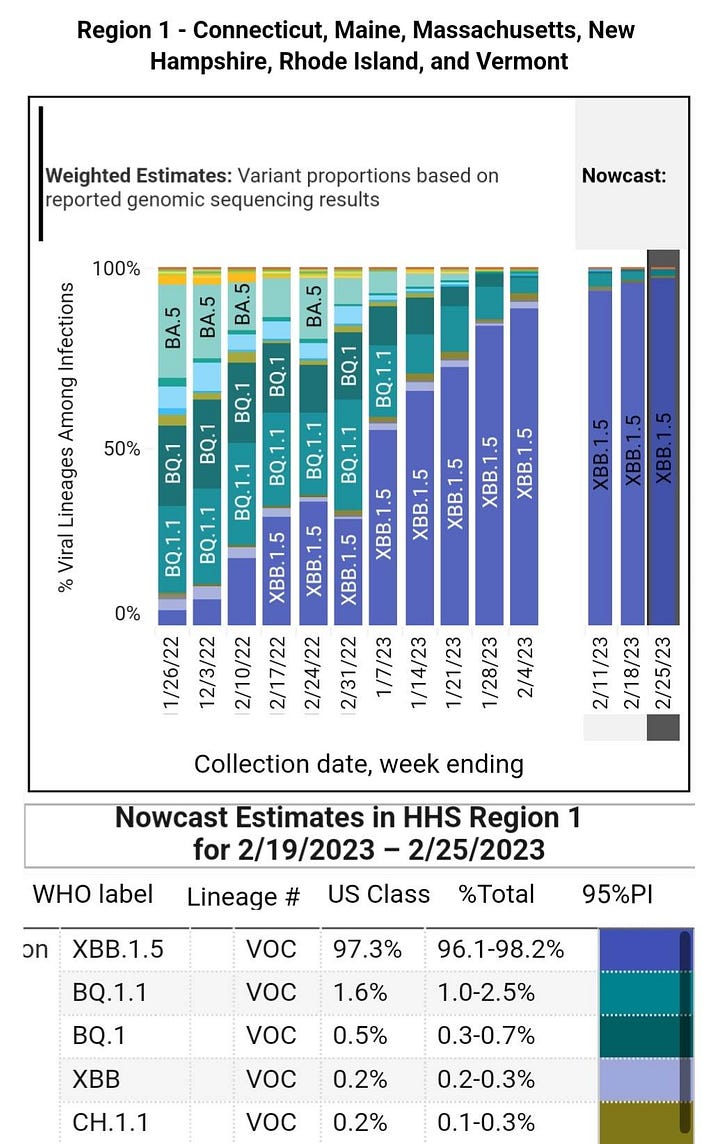COVID update: February 26, 2023; Long COVID, XBB.1.5 Prevalence Grows, AMA Warning on Reinfections, New Flu/COVID Test Approved and More
16 to 24 year old's in Australia were more resilient than some assumed.
Comparing the Mental Health of 16 to 24 Year Olds in Two Australian States with Different Lockdown and Restrictions in Place.
16 to 24 year olds on lockdown in Victoria, Australia were more resilient than some assumed. Victoria had one of the longest lockdowns in the world yet somehow they managed to make it through without becoming any more angry at the world than when it all started.
A study published February 23, 2023, comparing the impact of longer lockdowns on the mental health of young people in Australia during the COVID pandemic looked at how the COVID-19 pandemic and the restrictions that came with it affected the mental health of young people in two Australian states, Victoria and Queensland. Victoria had more days of lockdown and higher infection rates. Levels of negative emotions (as measured by the Depression Anxiety Stress Scale), COVID-19 risk factors for negative emotions (like financial hardship, education disruption, loneliness, and household conflict), and protective factors (like resilience and self-esteem) were compared between the Victorian and Queensland samples. Early pandemic data and pre-pandemic norms were also taken into account. Even though the pandemic restrictions were very different in the two states, there were no big differences in how unhappy the young people were. The results showed that young people in both Queensland and Victoria had similarly high levels of negative emotions as they did at the beginning of the pandemic.
They concluded that after the first year of the COVID-19 pandemic, there were no big differences in how unhappy young Victorians and Queenslanders were. This was true even though the intensity and length of lockdowns and the number of COVID-19 cases were different between the two states. They said that some of this can be explained by the fact that both states have had similar problems with job loss and school problems, and both states' governments have taken similar steps to help young people. This suggests that the pandemic restrictions (like lockdowns and keeping people away from each other) and infection rates did not affect the mental health of young people in Victoria more than in Queensland. Still, young people in Australia have a lot of bad feelings before the pandemic, and throughout it, which is a big problem that needs to be watched and dealt with as the pandemic continues.
Long COVID Update
If you think you might have COVID, make sure your get yourself and your children tested. If a home rapid test is positive then go to the doctor and get a PCR test to confirm it is COVID. Why is this important? You may need the proof months later if you find yourself suffering from Long COVID.
The XBB.1.5 variant is the most immune evasive variant to date, making the odds of long term persistence in organs much more likely, even if you don’t have bad symptoms. Mild symptoms or none at all can still cause long term chronic infection.
Without proof, claims may get denied. There are people dealing with this now. According to a Brookings institute estimate, about 420,000 workers likely left the workforce as of October 2022. According to the Department of Health and Human Services (HHS) up to 23 million Americans may be suffering from long-term COVID symptoms. HHS.gov provides guidance on claiming disability under the ADA, Section 504, and Section 1557. They say that Long COVID can qualify if it “substantially limits one or more major life activities, with a record of such an impairment (“record of”); or a person who is regarded as having such an impairment (“regarded as”).10 A person with long COVID has a disability if the person’s condition or any of its symptoms is a “physical or mental” impairment that “substantially limits” one or more major life activities.”
Have any of the following been challenges for you due to long-term COVID?
“This guidance addresses the “actual disability” part of the disability definition. The definition also covers individuals with a “record of” a substantially limiting impairment or those “regarded as” having a physical impairment (whether substantially limiting or not). This document does not address the “record of” or “regarded as” parts of the disability definition, which may also be relevant to claims regarding long COVID.”
What is long COVID and what are its symptoms?
“According to the Centers for Disease Control and Prevention (CDC), people with long COVID have a range of new or ongoing symptoms that can last weeks or months after they are infected with the virus that causes COVID-19 and that can worsen with physical or mental activity.8”
Examples of common symptoms of long COVID include:
Tiredness or fatigue
Difficulty thinking or concentrating (sometimes called “brain fog”)
Shortness of breath or difficulty breathing
Headache
Dizziness on standing
Fast-beating or pounding heart (known as heart palpitations)
Chest pain
Cough
Joint or muscle pain
Depression or anxiety
Fever
Loss of taste or smell
“This list is not exhaustive. Some people also experience damage to multiple organs including the heart, lungs, kidneys, skin, and brain.”
All of these issues are things that are happening to millions of people with older variants. Formerly strong and healthy people are dealing with these problems, vaccinated or not. Marathon runners, swimmers, and many different types of athletes are dealing with these issues. Young or old, vaccinated or not, exercising all the time or not, everyone is susceptible to persistent infections if infected with a large enough viral load from an infected person. XBB.1.5 will very likely increase the odds of persistent infections. The latest CDC data shows that XBB.1.5 continues to expand its reach across the U.S. and around the world. In the U.S. it makes up over 85% of sequenced cases and in the Northeast it is at over 97% prevalence, according to the CDC.


According to ONS data, an estimated 2.0 million people in the UK (3.0% of the population) were experiencing self-reported Long COVID as of 2 January 2023. This is probably only a small part of the total number of people whose health is affected by long-term problems. Over half (61%) reported experiencing Long COVID symptoms for at least one year. Over one-third (35%) reported experiencing symptoms for at least two years.
A study published Feb 24, 2023: “Patients with long covid—defined by the National Institute for Health and Care Excellence (NICE) as signs and symptoms that persist for more than four weeks (and especially more than 12 weeks) following acute covid-1912—may present in primary care with symptoms of palpitations (tachycardia) triggered by standing or minimal exertion. These may be accompanied by dizziness, breathlessness, chest pain, sweating, bloating, fatigue, and other symptoms which may be caused by a dysfunction of the autonomic nervous system (dysautonomia).”
Dysautonomia and postural orthostatic tachycardia syndromes
“The autonomic nervous system is responsible for the unconscious regulation of many physiological processes, including heart rate, blood pressure, respiration, and digestion. The broad category of “dysautonomia” encompasses several conditions, from the intermittent “faint” (neurocardiogenic syncope) through more pervasive dysregulation”
“Patients can find these symptoms debilitating and they can affect function and mood. Limited evidence, variable diagnostic criteria, uncertainty around cause and pathogenesis, and the absence of licensed medications, have all contributed to making this a difficult condition to diagnose and manage.” “Measures to reduce tachycardia can greatly improve function and ability to return to activities and work” That last sentence provides some hope but if doctors don’t understand it or how to diagnose it then people will suffer much longer than they may have had to. With widespread transmission of these variants, the odds of reinfection while already down, are very high and that will compound the damage.
What doctors at the American Medical Association wish patients knew about COVID Reinfection.
The AMA published an article on reinfection risks on Jan 20, 2023. They write that “each subsequent COVID infection will increase your risk of chronic health issues like diabetes, kidney disease, organ failure, & even mental health problems.” The evidence “dispels the myth that repeated brushes with the virus are mild and you don’t have to worry about it”
FDA Authorizes First Over-the-Counter At-Home Test to Detect Both Influenza and COVID-19 Viruses
February 24, 2023, “the U.S. Food and Drug Administration issued an emergency use authorization (EUA) for the first over-the-counter (OTC) at-home diagnostic test that can differentiate and detect influenza A and B, commonly known as the flu, and SARS-CoV-2, the virus that causes COVID-19. The Lucira COVID-19 & Flu Home Test is a single-use at-home test kit that provides results from self-collected nasal swab samples in roughly 30 minutes." If taking an at home test, as noted above, if it is positive, you should confirm that with a PCR from your doctor so you have a record of it.
GOP Ex-Sen. Inhofe Retired Due To Long COVID After Opposing COVID Aid
It has recently been reported that the longtime senator from Oklahoma said complications from COVID contributed to his stepping aside. He said that five or six other Senators have Long COVID, but he is the only one who admits it. Democratic Senator, Tim Kaine of Virginia, has also spoken out about his experience with lingering symptoms after COVID. If enough of these lawmakers are impacted maybe they will be willing to pass legislation that will help protect people and put money into more research.
The media and public health sources would like us to believe that COVID has become less dangerous and is not a significant concern. The media reports have dwindled to nearly zero. It is important to have completely independent views that are not beholden to large donors, political parties, or any other groups. Help support this work by becoming a paid subscriber today. Thank you for your support.






